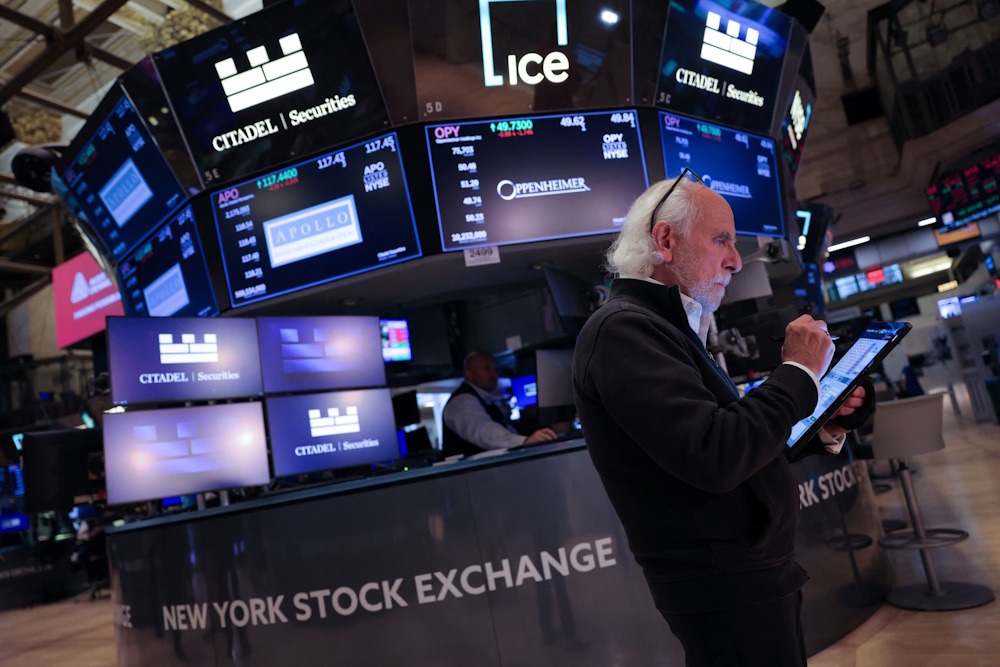
The tech-heavy Nasdaq Composite increased by 201.40 points, representing a 0.9% rise, concluding the session at 22,941.80. The S&P 500 increased by 39.03 points, representing a 0.6% rise, concluding at 6,738.43. Seven of the 11 broad sectors of the benchmark index concluded the trading session with positive performance. The Energy Select Sector SPDR, the Technology Select Sector SPDR, and the Industrials Select Sector SPDR each experienced an increase of 1.3%, whereas the Consumer Staples Select Sector SPDR saw a decrease of 0.5%. The Dow Jones Industrial Average increased by 0.3%, translating to a gain of 144.20 points, concluding at 46,734.61. Fifteen components of the 30-stock index concluded the trading session in positive territory, 14 experienced declines, while one remained unchanged.
The CBOE Volatility Index, often referred to as the fear gauge, experienced a decline of 7%, settling at 17.3. On Thursday, trading volume reached 19.1 billion shares, which is below the 20-session average of 20.6 billion shares. On the NYSE, the ratio of advancers to decliners stood at 2.05-to-1, while on the Nasdaq, it was 1.86-to-1. U.S. sanctions imposed on Russian oil firms have ignited a rally in energy markets. The U.S. government announced new sanctions on Thursday aimed at several major Russian oil companies, thereby intensifying geopolitical tensions and unsettling global energy markets. The sanctions, designed to limit Moscow’s energy revenues in response to its ongoing military operations in Ukraine, promptly caused a surge in crude oil prices.
Oil prices surged approximately 5% to reach a two-week peak on Thursday following the imposition of sanctions by the United States on significant Russian energy corporations such as Rosneft and Lukoil, a reaction to Moscow’s ongoing conflict in Ukraine. The decision prompted energy firms in China and India to contemplate a reduction in their imports of Russian crude oil. Brent crude increased by $3.40, representing a 5.4% rise, to finish at $65.99 per barrel, whereas WTI crude rose by $3.29, marking a 5.6% gain, to conclude at $61.79 per barrel. Energy stocks drove market gains as investors anticipated tighter global supply and enhanced profit margins. The S&P 500 Energy Index experienced an increase exceeding 2%, positioning it as the top-performing sector of the day. Broader market sentiment exhibited a mixed outlook, as elevated oil prices heightened inflation concerns and rekindled apprehensions regarding potential delays by the Fed in implementing interest-rate cuts. Consequently, shares of Marathon Petroleum Corporation and Phillips 66 rose 3.9% and 3.4%, respectively.
White House confirmation of a meeting between Trump and Xi has positively influenced market sentiment. On Thursday, the White House officially confirmed that Donald Trump would meet with Xi Jinping next week during his Asia trip, offering a much-needed sense of clarity in the context of rising U.S.-China trade tensions. The markets responded positively to the news. In the United States, major indexes experienced an uptick as investors interpreted the upcoming summit as a potential signal for de-escalation, which could alleviate trade tensions and diminish uncertainty. The confirmation alleviated some market anxieties following recent threats of tariffs and export controls, although investors continued to exercise caution due to the absence of specifics regarding the agenda or potential outcomes. The announcement mitigated a significant uncertainty within the intricate U.S.-China narrative, serving as a stabilizing force for sentiment. This prompted investors to shift away from defensive holdings and re-evaluate opportunities in growth- and trade-sensitive sectors.
